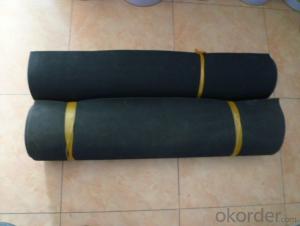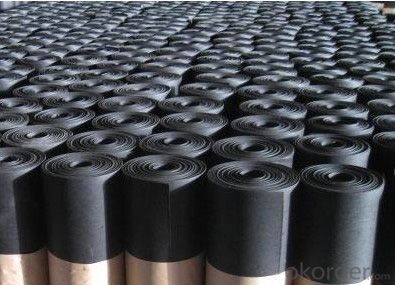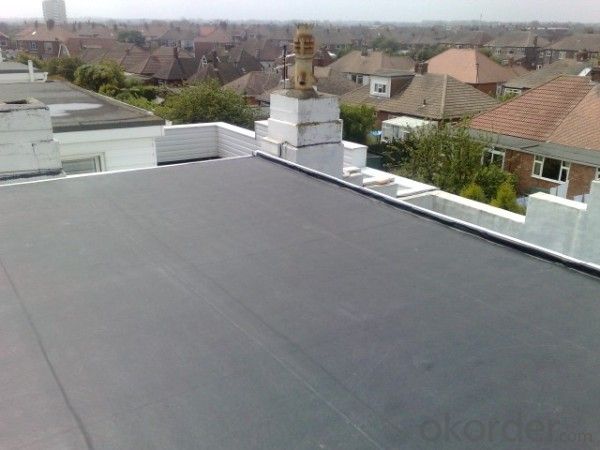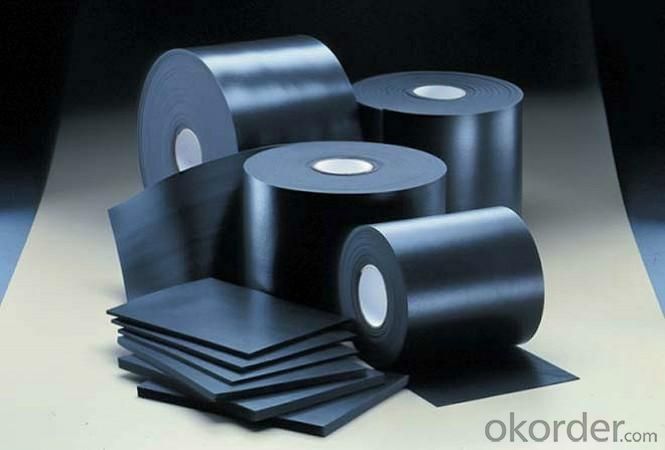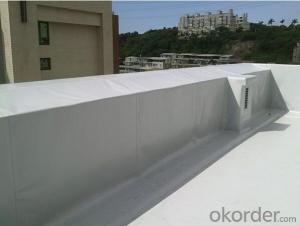EPDM Rubber Waterproof Membrane with Wider Width
- Loading Port:
- Shanghai
- Payment Terms:
- TT OR LC
- Min Order Qty:
- 50000 m²
- Supply Capability:
- 5000000 m²/month
OKorder Service Pledge
OKorder Financial Service
You Might Also Like
EPDM Rubber Waterproof Membrane with Wider Width
Description Of EPDM Rubber Waterproof Membrane with Wider Width:
This waterproof coiled material is of high elasticity with best performance among high polumer waterproof coiled material in the world.It is also the most typical one in the world.Waterproof coiled material made of ternary ethylene-propylene rubber is produced with the use of the most advanced contiuous extrusion and vulcanization technology and related equipments which are specially designed for production of such product.It is good in compactness,without bubble and performance difference in length and breadth,perfomances reach or exceed the demands of GB18173.1-2000 standard.
Main Features of EPDM Rubber Waterproof Membrane with Wider Width:
1.EPDM waterproof membrane for bridge engineering waterproof
2.EPDM waterproof membrane for water conservancy projects ,such as river bank,lake dam seepage.
3.EPDM waterproof membrane for the municipal engineering.
4.EPDM waterproof membrane for aquaculture.
Specifications of EPDM Rubber Waterproof Membrane with Wider Width:
| Number | Item | Unit | Value | |
| 1 | Size Variation | Thichness | % | ±10 |
| Width | % | ±1 | ||
| Length | % | Allowed negative | ||
| 2 | Breaking tensile strength at normal temperature | Mpa | ≥7.5 | |
| Breaking tensile strength at 70°C | Mpa | ≥2.3 | ||
| 3 | Breaking elongation at normal temperature | % | ≥450 | |
| Breaking elongation at -20°C | % | ≥200 | ||
| 4 | Tear strength | KN/m | ≥25 | |
| 5 | Impermeability(30min) | * | 0.3Mpa no leakage | |
| 6 | Bending at low tempreture | °C | ≤-40 | |
| 7 | Stretch tensor at heating | Elongate | mm | ≤2 |
| Shrink | mm | ≤4 | ||
| 8 | Air oven aging(80°C×168h) | Tensile strength at break retained | % | ≥80 |
| Elongation at break retained | % | ≥70 | ||
| 9 | Anti-alkali | Tensile strength at break retained | % | ≥80 |
| Elongation at break retained | % | ≥80 | ||
| 10 | Nuture weathing at manual simulation | Tensile strength at break retained | % | ≥80 |
| Elongation at break retained | % | ≥70 | ||
Applications of EPDM Rubber Waterproof Membrane with Wider Width:
Widely used in roofs, basement, toilet ,swimming pool, and all kinds of industry and civil building waterproofing, reservoir, vivicism, bridge, underground, tunnel and dam waterproofing ,especially to the keystone waterproofing projects which is durability, high corrosion resistance and easy deformation.
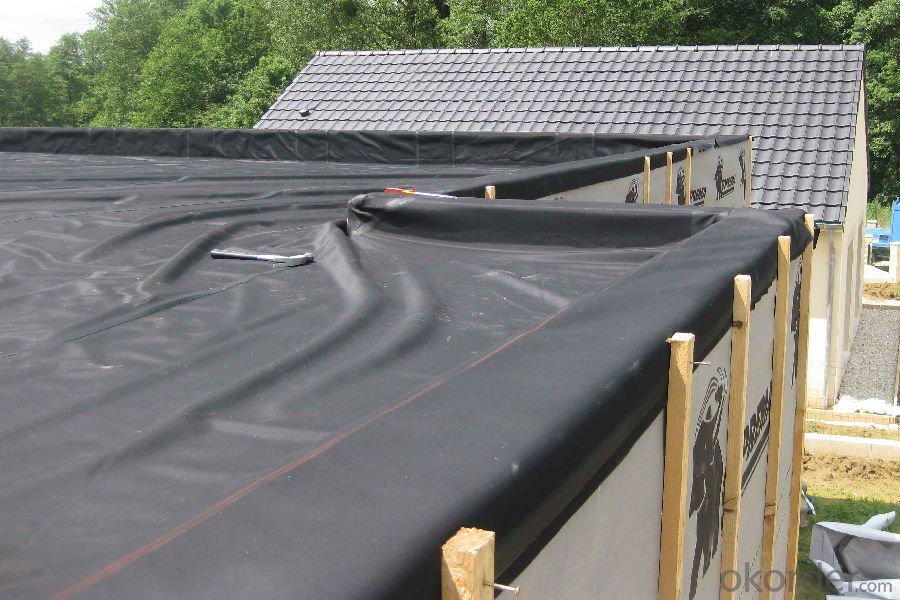
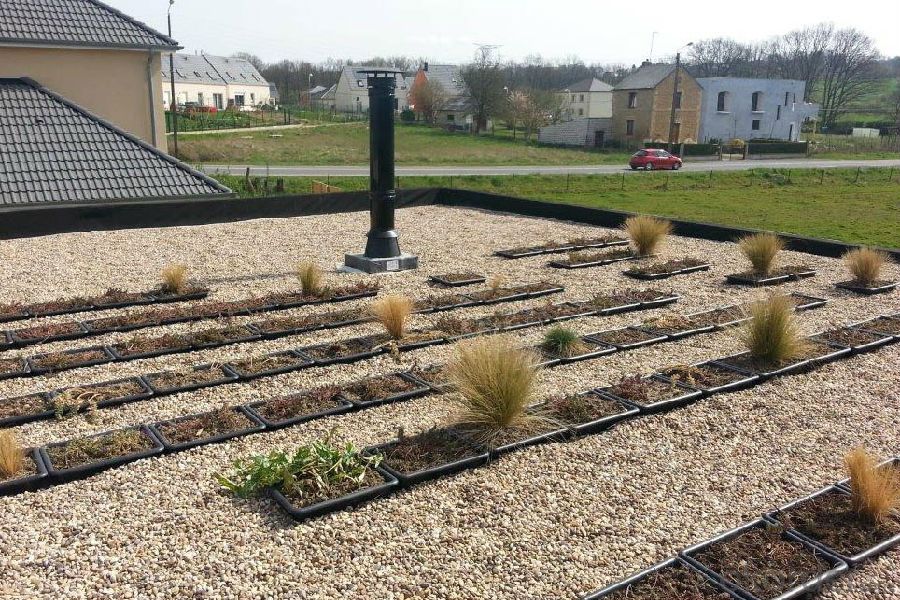
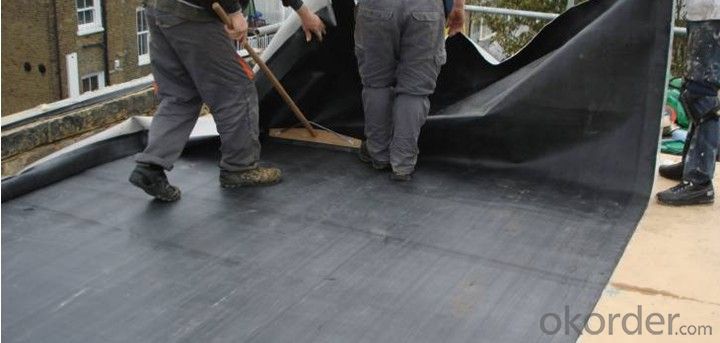
IMages of EPDM Rubber Waterproof Membrane with Wider Width:
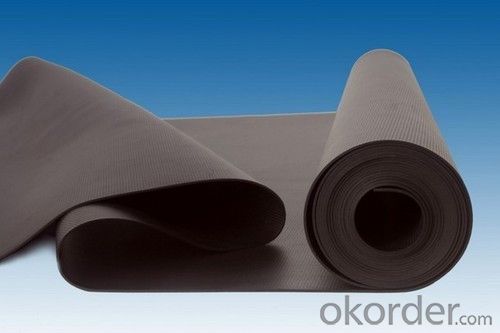
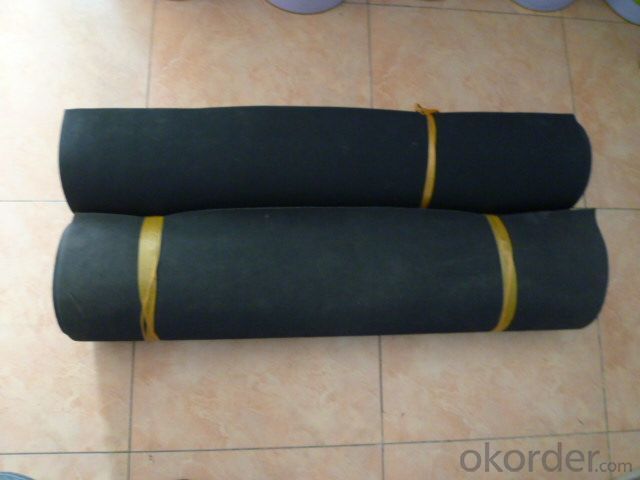
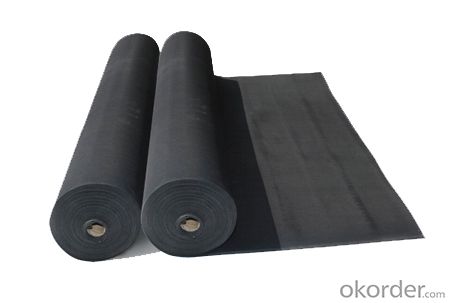
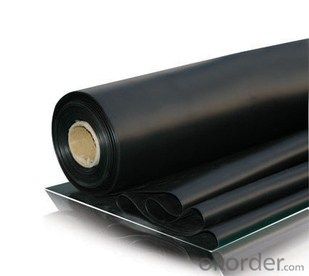
FAQ of EPDM Rubber Waterproof Membrane with Wider Width:
1. What are we supplying?
We are specialized in producing Colorful Asphalt Roof Shingle, SBS/APP modified bitumen waterproof membrane, Self adhesive bitumen waterproof membrane, PVC waterproofing membrane, EPDM rubber roofing membrane, Single Component Polyurethane Waterproof Coating, and Spray Polyurea Waterproof Coating
.
2. How Many years experience do we have?
We have been exported to more than 20 countries in the past 15 years.
3. How long do we usually reply your request?
We always reply our customer within 24 hours.
- Q: Can a waterproofing membrane be used in steam rooms?
- Yes, a waterproofing membrane can be used in steam rooms. A waterproofing membrane is designed to prevent water infiltration and is commonly used in areas where moisture is present, such as bathrooms, showers, and steam rooms. The membrane acts as a barrier, preventing water vapor from penetrating the underlying structure and causing damage. In steam rooms, where high levels of humidity and moisture are present, using a waterproofing membrane is essential to protect the walls, floors, and other surfaces from water damage and mold growth. It is important to choose a waterproofing membrane that is specifically designed for high moisture environments like steam rooms to ensure proper protection and longevity. Additionally, proper installation and adherence to manufacturer guidelines are crucial for the effectiveness and durability of the waterproofing membrane in a steam room setting.
- Q: Waterproof basement is empty shop or full shop
- Waterproof construction methods are generally reflected in the construction drawings. If not, please consult the designer.
- Q: Is a waterproofing membrane resistant to hydrocarbons or oil spills?
- Typically, a waterproofing membrane exhibits resistance against hydrocarbons and oil spills. Its primary purpose is to create a barrier that prevents water penetration and protects the underlying surfaces from moisture damage. These membranes are commonly made from materials such as modified bitumen, polyurethane, or PVC, all of which possess excellent chemical resistance, including towards hydrocarbons and oil. This resistance guarantees that the membrane remains intact and effective even when exposed to substances like oil spills or hydrocarbon-based liquids. However, it is crucial to note that the specific resistance may vary depending on the type and quality of the selected waterproofing membrane. Therefore, it is essential to choose a membrane that is specifically engineered to withstand the intended environment and potential chemical exposures.
- Q: Can a waterproofing membrane be used for above-grade applications?
- Yes, a waterproofing membrane can be used for above-grade applications. Waterproofing membranes are commonly used in construction to prevent water infiltration and damage to structures. While they are often used for below-grade applications such as basements and foundations, waterproofing membranes can also be used above-grade on surfaces such as roofs, decks, and exterior walls. In above-grade applications, waterproofing membranes act as a barrier against moisture, preventing water from seeping into the structure. They are designed to withstand prolonged exposure to the elements, including rain, snow, and UV rays. By effectively sealing the surface, a waterproofing membrane helps to protect the structure from water damage, mold growth, and deterioration. There are different types of waterproofing membranes available for above-grade applications, including liquid-applied membranes, sheet membranes, and self-adhering membranes. These membranes are often made from materials such as modified bitumen, polyurethane, or rubberized asphalt, which provide excellent waterproofing properties. When installing a waterproofing membrane above-grade, proper surface preparation is essential. The surface needs to be clean, dry, and free from any contaminants that could compromise the adhesion of the membrane. Additionally, it is important to follow the manufacturer's instructions and guidelines for application techniques and recommended thickness. In summary, a waterproofing membrane can be used for above-grade applications to effectively protect structures from water infiltration and damage. By choosing the appropriate type of membrane and following proper installation procedures, it is possible to create a durable and reliable waterproofing system for above-grade surfaces.
- Q: Can a waterproofing membrane be used for a crawl space?
- Yes, a waterproofing membrane can be used for a crawl space. It can help prevent moisture from seeping into the crawl space, protecting the area from water damage and potential mold growth.
- Q: How does a waterproofing membrane handle cracks in the substrate?
- A waterproofing membrane is designed to handle cracks in the substrate by creating a seamless barrier over them. It fills and seals the cracks, preventing water from seeping through and compromising the integrity of the structure. This helps to maintain the waterproofing effectiveness and protect the underlying materials from water damage.
- Q: Can a waterproofing membrane be used on foam block surfaces?
- Yes, a waterproofing membrane can be used on foam block surfaces. Foam blocks, such as expanded polystyrene (EPS) or extruded polystyrene (XPS), are often used as insulation in buildings. However, foam blocks are not inherently waterproof and can absorb moisture if left unprotected. To prevent water infiltration and potential damage, a waterproofing membrane can be applied to the foam block surfaces. The membrane acts as a barrier, preventing water from seeping into the foam and protecting it from moisture-related issues such as mold, mildew, or degradation. It is important to select a waterproofing membrane that is compatible with foam block surfaces and follow the manufacturer's instructions for proper application. Additionally, it is recommended to consult with a professional or a building engineer to ensure the appropriate waterproofing solution is chosen for the specific foam block application.
- Q: Can a waterproofing membrane be used in parking garages?
- Yes, a waterproofing membrane can be used in parking garages. It is commonly used to protect the structure from water damage, such as leaks and corrosion, which can be caused by water infiltrating through the concrete. A waterproofing membrane helps to create a barrier that prevents water penetration, ensuring the durability and longevity of the parking garage.
- Q: Can a waterproofing membrane be used for data centers?
- Using a waterproofing membrane in data centers is possible. The main purpose of a waterproofing membrane is to stop water from getting in, which is very important for safeguarding delicate equipment and crucial data in a data center. Water damage can lead to expensive periods of inactivity and data loss, so it is crucial to have dependable waterproofing measures in place. By applying a waterproofing membrane to the walls, floors, and ceilings of a data center, a barrier can be created to prevent water leaks and the buildup of moisture. This ensures that a controlled and dry environment is maintained, guaranteeing the safety and functionality of the data center's infrastructure and equipment. Furthermore, certain waterproofing membranes also provide insulation properties, further improving the protection and energy efficiency of the data center.
- Q: How does a waterproofing membrane handle exposure to UV rays?
- A waterproofing membrane is designed to have excellent resistance to UV rays. It typically contains additives or stabilizers that protect it from the damaging effects of sunlight. This helps to prevent degradation, discoloration, and potential weakening of the membrane due to prolonged exposure to UV rays.
Send your message to us
EPDM Rubber Waterproof Membrane with Wider Width
- Loading Port:
- Shanghai
- Payment Terms:
- TT OR LC
- Min Order Qty:
- 50000 m²
- Supply Capability:
- 5000000 m²/month
OKorder Service Pledge
OKorder Financial Service
Similar products
Hot products
Hot Searches
Related keywords
